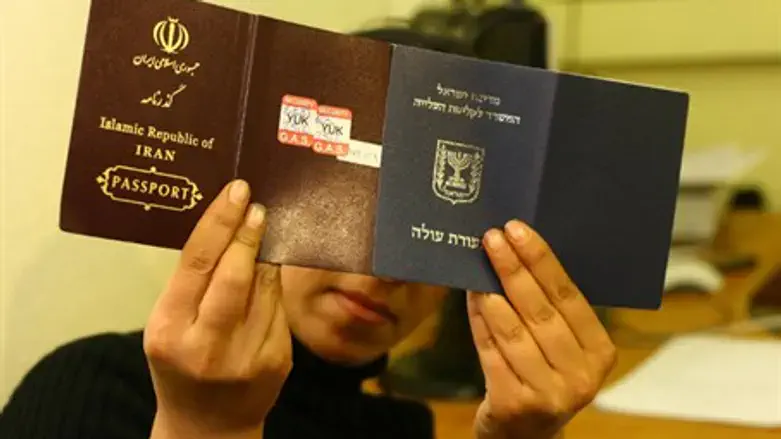
The relationship between Jews and Persians is one of human history's most fascinating and enduring sagas. It is characterized by mutual influence, cultural exchange, and pivotal moments that shaped both communities. Spanning millennia, from the Achaemenid Empire to modern times, the interactions between these two peoples left an indelible mark on religious, cultural, and political landscapes. This article explores the Historical connections, shared struggles, and contributions of Jews and Persians, drawing on key moments that highlight their unique bond. Would that the future allows for this connection to be reestablished, once the rule of the mullahs is brought to an end.
One of the most transformative episodes in Jewish-Persian history occurred in the 6th century BCE when the Persian king Cyrus the Great conquered Babylon in 539 BCE. At that time, the Jewish people were in exile because their Holy Temple in Jerusalem had been destroyed by the Babylonians in 586 BCE. Cyrus, known for his policy of religious tolerance, issued a decree allowing the Jews to return to Jerusalem and rebuild their Temple, an event chronicled in the biblical Book of Ezra. This act, often called the Edict of Cyrus, marked a turning point for Judaism. It enabled the Jews to reconstruct their Temple and restore their religious and cultural center in Jerusalem, helping to the survival of their monotheistic faith.
Cyrus’s benevolence reflected the Achaemenid Empire’s approach to governance, which respected its subjects' cultural and religious diversity. This policy fostered gratitude among Jews, who revered Cyrus as a divinely appointed liberator—a sentiment echoed in the Book of Isaiah, where he is called God’s “anointed.” The construction of the Second Temple, completed around 516 BCE under Persian patronage, solidified Jewish identity and practice.
The Jewish community in Persia, known as Persian Jews or Yehudim Parsim, is one of the oldest and most enduring Jewish diasporas. Persian Jews trace their origins to the Babylonian Exile, with many choosing to remain in Persia even after they had the opportunity to return to Jerusalem. Over time, they established deep roots and made significant contributions to the cultural and economic life of the region. By the 5th century BCE, Persian Jews were integrated into the empire’s cosmopolitan society and served as merchants, administrators, and scholars.
The biblical story of Esther, set during the reign of King Ahasuerus (likely Xerxes I), highlights the prominence of Jews in Persian society. Esther, a Jewish woman, became queen and, with her cousin Mordecai, thwarted a plot to annihilate the Jews, an event commemorated annually during the Jewish holiday of Purim. The tomb of Esther and Mordecai in Hamadan, Iran, remains a pilgrimage site, symbolizing the enduring connection between Jews and Persians.
The Jewish presence in Persia contributed to the empire’s intellectual and cultural diversity. Persian Jews translated and preserved biblical texts, while their interactions with Persian scholars enriched both communities. Jewish and Zoroastrian monotheism may have influenced one another, particularly in the development of ethical monotheism. This mutual exchange fostered a dynamic cultural synthesis, evident in art, literature, and religious practices.
Despite periods of prosperity, Persian Jews faced challenges, especially during times of political upheaval. Opposition from neighboring groups to the construction of the Second Temple delayed the project until the Persian kings Darius I and Artaxerxes I reaffirmed their support.
Later, under the Parthian and Sasanian dynasties, Jews experienced changing fortunes, with periods of tolerance mixed with restrictions. Nonetheless, their resilience allowed them to maintain their identity by establishing yeshivas and producing important religious texts, such as the Babylonian Talmud.
In modern times, the Jewish community in Iran has diminished due to political changes and emigration, particularly after the 1979 so-called Islamic Revolution. Nevertheless, Persian Jews in the diaspora, especially in Israel and the United States, continue celebrating their heritage through traditions like the sofreh (Persian New Year), a ceremonial table setting, and Persian-influenced synagogue architecture.
The story of Jews and Persians reflects a bond of mutual respect, shared history, and cultural enrichment. From Cyrus’s liberation to today’s vibrant Persian Jewish communities, their relationship exemplifies the power of tolerance and collaboration. The Jewish holiday of Purim, the architectural echoes of Persepolis in Persian Jewish synagogues, and the philosophical exchanges between Zoroastrianism and Judaism testify to a connection that has shaped both peoples. As global challenges persist, the historical alliance between Jews and Persians reminds us of the potential for coexistence and mutual growth across cultures.
True Iranians have remained friends of the Jews through both belief and deed.
One last note: During the shameful Hitlerian campaign to exterminate the Jews, Iranian missions in Europe, especially the one in France, issued Iranian passports to help facilitate the escape of French and other European Jews from the clutches of the Nazis and their gas chambers. This historical act of humanity is known as the “Iranian Schindler.”